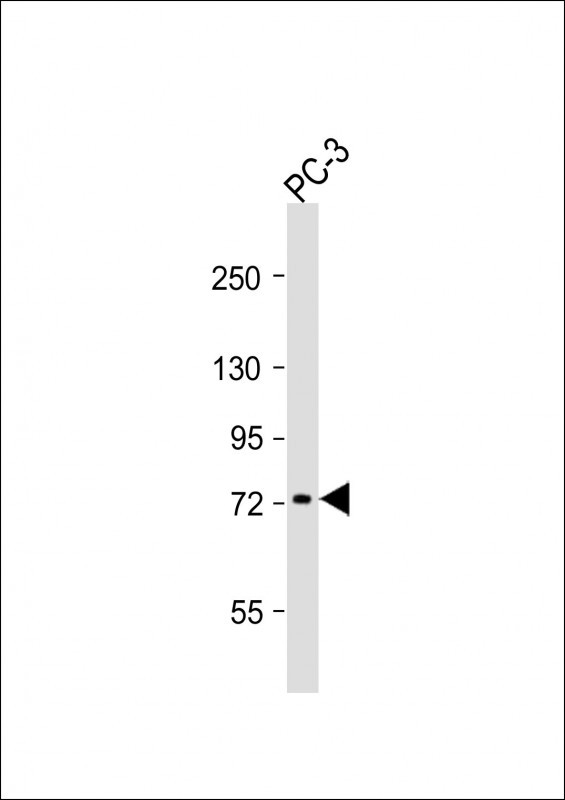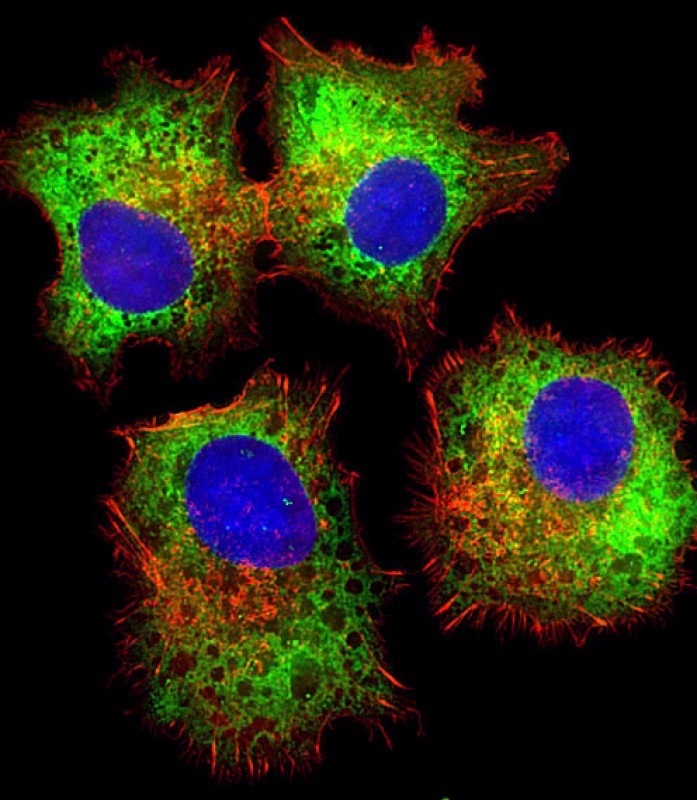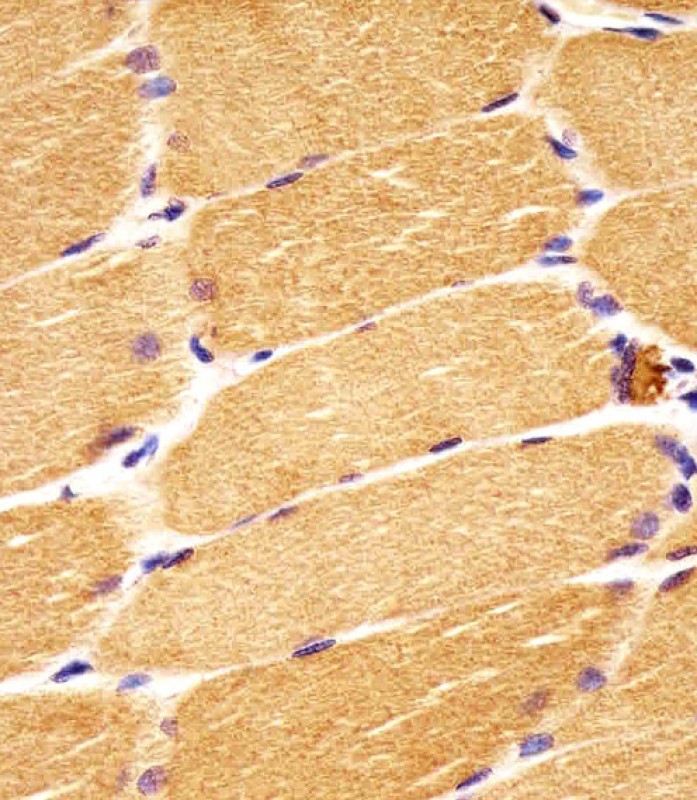



| WB | 1/1000-1/2000 | Human,Mouse,Rat |
| IF | 咨询技术 | Human,Mouse,Rat |
| IHC | 1/100-1/500 | Human,Mouse,Rat |
| ICC | 1/25 | Human,Mouse,Rat |
| FCM | 咨询技术 | Human,Mouse,Rat |
| Elisa | 咨询技术 | Human,Mouse,Rat |
| Aliases | Segment polarity protein dishevelled homolog DVL-1, Dishevelled-1, DSH homolog 1, DVL1 |
| Entrez GeneID | 1855 |
| WB Predicted band size | 75.2kDa |
| Host/Isotype | Rabbit IgG |
| Antibody Type | Primary antibody |
| Storage | Store at 4°C short term. Aliquot and store at -20°C long term. Avoid freeze/thaw cycles. |
| Species Reactivity | Human, Mouse, Rat |
| Immunogen | This DVL1 antibody is generated from rabbits immunized with a KLH conjugated synthetic peptide between 442-470 amino acids from the Central region of human DVL1. |
| Formulation | Purified antibody in PBS with 0.05% sodium azide. |
+ +
以下是关于DVL1抗体的3篇参考文献的简要总结:
---
1. **文献名称**:*Characterization of monoclonal antibodies raised against Dishevelled-1: Insights into DVL1 protein expression in colorectal cancer*
**作者**:Umbhauer, M., et al.
**摘要**:该研究报道了针对DVL1蛋白的单克隆抗体的开发与验证。作者通过Western blot和免疫组化证实了抗体在结直肠癌组织中的特异性,并发现DVL1的异常表达与Wnt/β-catenin信号通路的激活相关。
---
2. **文献名称**:*Subcellular localization of Dishevelled-1 in Wnt signaling pathways revealed by a novel DVL1-specific antibody*
**作者**:Kishida, S., et al.
**摘要**:研究团队开发了一种高特异性的DVL1抗体,用于免疫荧光和共聚焦显微镜分析。结果表明,DVL1在Wnt刺激后易位至细胞膜,提示其在信号转导中的动态定位机制。
---
3. **文献名称**:*DVL1 as a potential biomarker in triple-negative breast cancer: Antibody-based detection and clinical correlations*
**作者**:Wang, Y., et al.
**摘要**:本研究利用商业化DVL1抗体(如CST #3218)评估了三阴性乳腺癌中DVL1的表达水平。结果显示,DVL1高表达与患者预后不良显著相关,支持其作为治疗靶点的潜力。
---
这些文献涵盖了DVL1抗体的开发、验证及在疾病研究中的应用,为相关实验提供了方法学参考和生物学见解。
The DVL1 antibody is a crucial tool for studying the Dishevelled-1 (DVL1) protein, a key component of the Wnt signaling pathway. DVL1. part of the Dishevelled (DVL) family (DVL1. DVL2. DVL3), acts as a signaling scaffold that regulates both canonical (β-catenin-dependent) and non-canonical Wnt pathways, influencing processes like embryonic development, cell polarity, and tissue homeostasis. Dysregulation of DVL1 is linked to cancers, developmental disorders, and other diseases, making it a target for mechanistic and therapeutic research.
Structurally, DVL1 contains three conserved domains: DIX (for protein oligomerization), PDZ (mediating protein interactions), and DEP (membrane localization). Antibodies targeting these domains or specific phosphorylation sites help detect DVL1 expression, localization, and post-translational modifications. Researchers use DVL1 antibodies in techniques such as Western blotting, immunohistochemistry (IHC), immunofluorescence (IF), and co-immunoprecipitation (Co-IP) to explore its role in Wnt signaling dynamics or disease contexts.
Commercially available DVL1 antibodies are typically raised in rabbits or mice, with monoclonal or polyclonal formats offering varying specificity. Validation data (e.g., knockout controls) are critical due to potential cross-reactivity with DVL2/DVL3. These reagents are essential for studying Wnt-driven pathologies, including colorectal cancer, neurodegenerative diseases, and skeletal abnormalities, providing insights into DVL1’s dual roles as a signaling hub and potential therapeutic target.
×